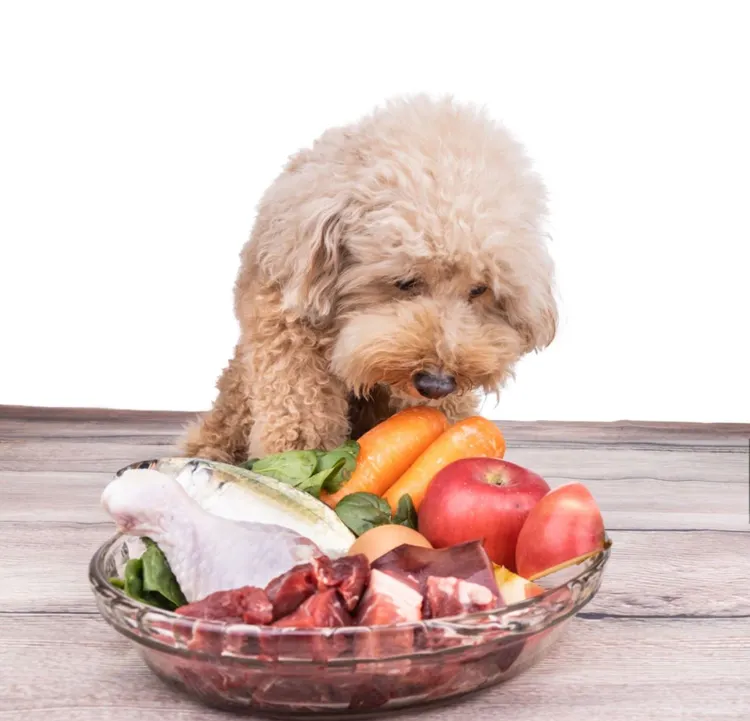Does your dog often turn its nose up at the food you lovingly place in its bowl? If so, you’re not alone! Dealing with a picky eater can be frustrating for pet owners, but with some insight and a few eco-friendly tricks, you can transform mealtime into an enjoyable and nutritious experience for your dog. Let’s dive into why some dogs become picky eaters and how you can encourage better eating habits in a sustainable way.
Common Reasons Dogs Become Picky Eaters
Dogs can be picky for several reasons, from health issues to behavioral quirks. Identifying the root cause of your dog’s picky eating is crucial to addressing it effectively.
1. Health Issues
If your dog is suddenly rejecting food, it might be due to an underlying health problem. Conditions like dental pain, digestive issues, or food allergies can all cause discomfort, leading to a loss of appetite.
- Dental pain: A broken tooth, gum disease, or sore gums may make it uncomfortable for your dog to chew, especially if you’re offering kibble.
- Digestive problems: Upset stomach, indigestion, or food intolerances can cause dogs to shy away from food that previously agreed with them.
- Food allergies: Some dogs may develop sensitivities to certain ingredients, making them wary of meals that trigger discomfort.
Solution: If you suspect a health issue, consult your vet. Regular checkups and a thorough dental examination can help rule out or treat these problems.
2. Behavioral Causes
Dogs can develop picky eating habits due to behavioral reasons, such as anxiety, boredom, or seeking attention. Changes in their environment, routine, or a new family member (like a baby or another pet) can trigger this behavior.
- Anxiety: Stressful situations or changes in environment can cause dogs to eat less or refuse food altogether.
- Boredom: Just like people, dogs may get bored with the same food every day. A lack of variety can cause disinterest in meals.
- Attention-seeking: Sometimes dogs learn that refusing food leads to extra attention from their owners, reinforcing the behavior.
Solution: Keep mealtime consistent and calm. If behavioral causes seem to be the issue, training techniques like rewarding positive behavior with eco-friendly treats can encourage better eating habits.
3. Dietary Preferences
Some dogs are simply more particular about their food preferences. Just as humans have favorite foods, dogs may prefer certain textures, flavors, or ingredients over others.
- Texture: Some dogs prefer soft foods, while others enjoy crunchier options.
- Flavor: Your dog may lean towards specific proteins or flavors. Rotating proteins can help keep their interest piqued.
Solution: Experiment with different food textures and flavors, but do so in moderation to avoid digestive upset. Offering a rotational diet of natural, organic, or sustainably sourced foods is a great way to keep your dog engaged while supporting eco-conscious feeding practices.
4. Feeding Practices
Your dog’s eating habits may be a reflection of how meals are presented and your overall feeding routine. If meal times are inconsistent or if your dog receives frequent treats, they might hold out for tastier options, rejecting their regular food.
- Inconsistent meal times: If your dog’s feeding schedule varies, it may lead to irregular hunger patterns and picky behavior.
- Excessive treats: Offering too many treats throughout the day can reduce your dog’s appetite for regular meals.
Solution: Stick to a consistent feeding schedule and limit treats to reinforce the idea that mealtime is for eating. Opt for eco-friendly treats made from natural ingredients and give them sparingly.

How to Encourage a Picky Eater to Eat
Now that we’ve explored the potential causes of picky eating, let’s look at some practical strategies to help your dog enjoy its food.
1. Stick to a Feeding Schedule
Offer meals at the same time each day to help regulate your dog’s appetite. Dogs thrive on routine, and a consistent schedule can prevent them from waiting for more exciting options to appear later in the day. Avoid leaving food out for long periods—after 20 minutes, pick up the bowl and try again at the next meal time.
2. Limit Treats
Cut back on treats to ensure your dog is hungry when it’s time for meals. Offering treats throughout the day can curb your dog’s appetite for its main meals. If you do give treats, ensure they’re made from natural, sustainably sourced ingredients to promote eco-friendly feeding habits.
3. Add Flavorful Toppers
Boost the appeal of your dog’s food by adding healthy, natural food toppers. Toppers like bone broth, pumpkin puree, or fresh vegetables can enhance the flavor and nutrition of your dog’s meals. Make sure any additions are safe and suitable for dogs. Opt for organic or locally sourced ingredients to minimize your environmental footprint.
Examples of Natural Toppers:
- Bone broth: Rich in nutrients, bone broth adds flavor and moisture to dry kibble.
- Pumpkin puree: A great source of fiber, pumpkin can help regulate your dog’s digestion and make food more enticing.
- Fresh vegetables: Try adding small amounts of dog-safe veggies like carrots, sweet potatoes, or green beans to your dog’s food.
4. Use Puzzle Feeders
Turn mealtime into a fun activity by using eco-friendly puzzle feeders or slow feeders. These interactive tools provide mental stimulation while encouraging your dog to eat more slowly, reducing the likelihood of picky eating. Puzzle feeders made from sustainable or recycled materials align with eco-conscious values and promote a healthy eating routine.
5. Try Rotational Feeding
Introducing variety into your dog’s diet can keep them engaged and interested in their meals. Rotational feeding involves offering different proteins or food types on a regular basis, such as alternating between beef, chicken, or fish. Ensure that any new foods are introduced gradually to avoid upsetting your dog’s stomach. Using organic, human-grade ingredients in homemade meals also reduces your carbon footprint and supports sustainable food practices.

Eco-Friendly Feeding Practices
Being mindful of how you feed your dog can make a positive impact on the environment. Incorporating sustainable feeding practices not only helps your dog develop healthy eating habits but also reduces waste and conserves natural resources.
1. Choose Sustainable Brands
Look for pet food brands that prioritize sustainability by using organic ingredients, ethically sourced proteins, and eco-conscious packaging. Many companies now offer foods made with responsibly farmed meats and grains, ensuring that your dog’s meals are both nutritious and environmentally friendly.
2. Prepare Homemade Meals
Preparing homemade meals for your dog is an excellent way to reduce food waste, avoid harmful additives, and ensure that your pet is eating fresh, natural ingredients. You can create meals that cater to your dog’s specific dietary needs, using locally sourced, organic produce and sustainably farmed proteins. Be sure to consult with a vet or pet nutritionist to ensure your dog receives a balanced diet.
3. Use Compostable Bowls or Recyclable Containers
Feeding your dog in compostable or recyclable bowls helps reduce plastic waste. Opt for durable, sustainable materials like bamboo or stainless steel, which are eco-friendly alternatives to plastic bowls. Additionally, store your dog’s food in glass or metal containers to avoid plastic waste and maintain freshness.
Conclusion
Managing a picky eater can be a challenge, but with patience, consistency, and eco-friendly solutions, you can encourage healthier eating habits for your dog. By sticking to a regular feeding schedule, limiting treats, and adding natural, flavorful toppers, you can make mealtime more enjoyable. Incorporating sustainable feeding practices, like using eco-friendly puzzle feeders or preparing homemade meals, not only supports your dog’s health but also promotes a greener, more sustainable lifestyle. Remember, small changes in how you feed your dog can have a big impact on both their well-being and the environment.



